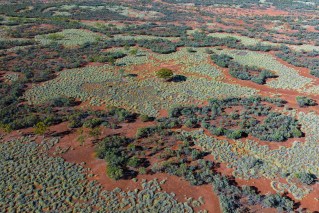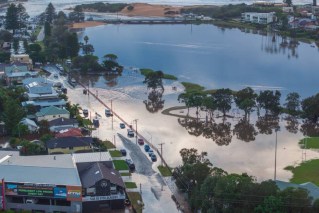Queensland police dog dies in heatwave conditions

1 hour ago More Queensland police dog Waco died after suffering heat stress while chasing offender in Deception Bay. photo: Queensland Police
Several towns in Queensland’s Southern Downs have sweltered through their hottest February day on record.
BOM forecaster Vinord Anand said it was the hottest February day in the town since records began more than 50 years ago.
“The record before yesterday was 39 degrees, which was in February 1983,” he said.
The hot weather claimed an unlikely victim on Thursday, when eight-year-old police dog Waco died from heat stroke after chasing an offender.
Sadly, one of our serving Police Dogs, Waco, died whilst he was on duty yesterday. We'll miss you, boy. https://t.co/sbtuv2q5Ud
— Queensland Police (@QldPolice) February 3, 2017
A Queensland police spokesman said the German shepherd was tracking a car thief in Deception Bay, north of Brisbane, at about 1:30pm when his handler noticed he was unsteady on his feet.
Waco died early Friday morning after efforts to lower his body temperature and replace his fluids failed.
Granite Belt and Channel Country feeling it
Applethorpe hit a scorching 36.8C, more than 11C above average.
“The last time it was nearly that hot was in February, also in 1983, when it was 36.1C,” Mr Anand said.
The all-time maximum record for Applethorpe is 37.8C, while in Warwick it is 41.7C.
#Heatwave conditions to continue this weekend with areas forecast to reach 45C across #SWQld. Believe it or not, even hotter next week! pic.twitter.com/WTi4zLQ9wV
— Bureau of Meteorology, Queensland (@BOM_Qld) February 3, 2017
Friday’s highest temperatures so far have been in the Channel Country in the state’s south-west.
By 11:30am, it had hit 41.3C in Birdsville and 40.4C in Windorah.
More temperature records could be broken next week unless a high pressure system over the Tasman Sea arrives to cool things down.
The hot weather is the continuation of a low pressure surface trough over southern Queensland that contributed to higher than average temperatures in January.
Overnight minimums in January were the highest on record for a large area of southern Queensland, while maximum temperatures were in the highest 10 per cent of historical records for nearly all of the state’s southern half.
– ABC








